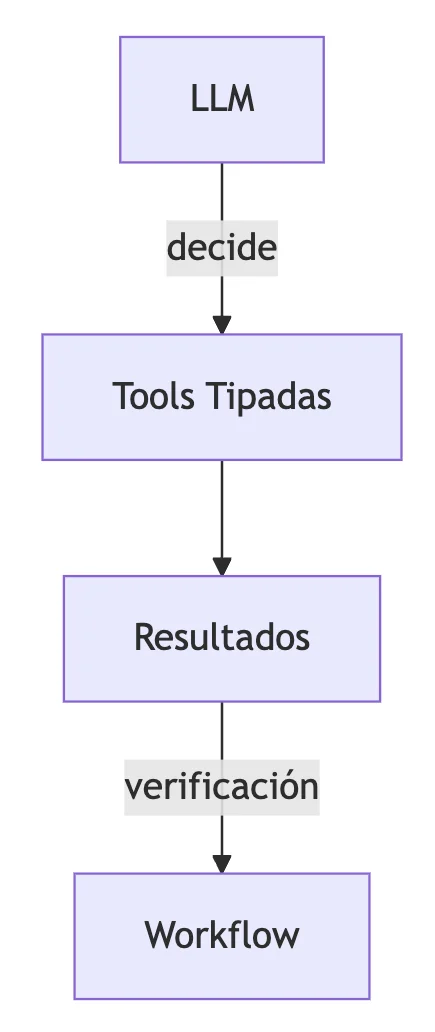Agentic in LangChain4j: Well-Designed Toolbox or Guaranteed Chaos
10-11-2025
In LangChain4j, agentic flows offer great flexibility by delegating decisions to the language model. However, this flexibility can turn into chaos if the available tools are not well-designed. The quality of agentic behavior is directly related to the clarity, typing, and control of its tools.
1. What is agentic in LangChain4j
The agentic approach combines the ReAct pattern (Reason + Act) with a set of tools accessible from the LLM. The model receives a structured description of these tools and decides which ones to use, in what order, and with what arguments.
This mechanism allows the agent to build reasoning chains and execute actions without a fixed sequence, enabling more open and adaptable interaction.
2. Pure and Typed Tools
Tools must be designed as pure functions:
- Without unexpected side effects.
- Clearly defined and typed input and output (preferably via JSON Schema or strongly typed interfaces).
- Stable I/O contracts to facilitate model interpretation and system validation.
In the case of Java and Kotlin, this is naturally implemented using record (Java) or data class (Kotlin), allowing for concise and robust definition of strongly typed contracts for tools.
This facilitates unit testing, maintenance, and auditability. In fact, at Lean Mind, we place special importance on software quality from the ground up, and the design of testable tools is part of our values as a consultancy specializing in sustainable development.
3. Effective Descriptions for the LLM
Each tool must have a well-written description that includes:
- Clear purpose: what it is for and what it solves.
- Expected parameters: type, format, and constraints.
- Limitations: when it should not be used.
A good description is part of effective "prompting": it avoids errors, reduces unnecessary steps, and improves interpretability.
4. Limits and Execution Control
To avoid erratic or costly behaviors, the agentic environment should include:
- Limits on steps and calls per iteration.
- Token budget per session.
- Timeouts per tool.
These mechanisms prevent loops, excessive consumption, and blockages.
5. Observability and Traceability
Each tool invocation should be logged with:
- Tool called and parameters used.
- Result returned or error.
- Execution time.
This allows auditing, debugging, and improving agentic behavior with real data.
Example: Flow with Typed Toolbox

Tools Design Checklist
- Clear and precise name.
- Explicit input/output contract.
- Usage example.
- Time and token limits.
- Detailed logging per invocation.
Frequently Asked Questions
-
How many tools are too many?
- It depends on the domain, but more than 15-20 tools can overwhelm the model's capacity to decide well.
-
How to avoid loops or redundancies?
- Define strict iteration limits and ensure each tool is deterministic and predictable.
Conclusion
An agentic system is as robust as the tools it exposes to the model. Designing well-typed tools with clear contracts, useful descriptions, and defined operational limits not only improves the agent's performance but also facilitates its maintenance and scalability.
At Lean Mind, we help design AI architectures based on these principles: clarity, testability, and control. Because good technical design is the foundation for building intelligent products that scale and endure over time.
